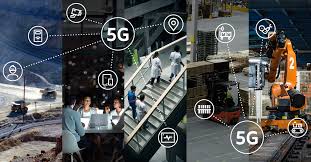Ericsson 5G Technology: Innovations and Market Impact
telcomatraining.com – Ericsson is one of the world’s leading telecommunications equipment providers and a pioneer in 5G technology. Headquartered in Sweden, the company has played a crucial role in shaping the next generation of mobile connectivity. As 5G networks continue to roll out globally, Ericsson’s innovations in infrastructure, software, and spectrum efficiency are significantly influencing how industries and consumers experience high-speed wireless communication.
Key Innovations in Ericsson 5G Technology
Ericsson’s 5G technology stack is built around cutting-edge hardware and software designed to deliver ultra-low latency, massive device connectivity, and gigabit-level speeds. Some of the most notable innovations include:
1. Ericsson Radio System (ERS)
The Ericsson Radio System is a modular and scalable platform that enables mobile operators to deploy 5G more efficiently. With support for multiple frequency bands and advanced beamforming capabilities, ERS improves coverage and reduces power consumption.
2. Massive MIMO & Beamforming
Ericsson integrates Massive MIMO (Multiple Input Multiple Output) antennas to increase network capacity. Through smart beamforming, the system can direct signals more precisely, reducing interference and boosting performance in dense urban environments.
3. Cloud-Native 5G Core
Ericsson has developed a cloud-native 5G Core network that allows service providers to operate with agility and flexibility. This architecture supports network slicing, enabling operators to allocate dedicated resources for different use cases like IoT, AR/VR, and critical communications.
4. AI-Driven Network Management
Artificial Intelligence (AI) and machine learning are embedded in Ericsson’s network management systems. These technologies help predict traffic patterns, optimize performance in real-time, and reduce operational costs.
5. Energy-Efficient Solutions
Sustainability is a key focus. Ericsson’s 5G solutions consume significantly less energy per transmitted bit compared to 4G. This contributes to greener networks and aligns with global environmental goals.
Market Impact of Ericsson’s 5G Solutions
1. Global Deployment
Ericsson’s 5G infrastructure is deployed in over 50 countries, including major markets like the United States, the United Kingdom, India, and South Korea. The company has signed numerous commercial agreements with leading mobile operators such as Verizon, AT&T, and Vodafone.
2. Industrial Applications
Beyond consumer mobile services, Ericsson’s 5G solutions are powering Industry 4.0. Smart factories, connected vehicles, and remote healthcare are all leveraging Ericsson’s technology for real-time data processing and automation.
3. Boosting National Economies
Studies have shown that 5G can significantly boost GDP by enhancing productivity and enabling new services. Ericsson’s collaborations with governments and private sectors help accelerate digital transformation, especially in emerging markets.
4. Support for Private Networks
Ericsson is a leader in providing private 5G networks for enterprises. These dedicated networks support mission-critical operations in mining, manufacturing, logistics, and energy sectors.
Challenges and Future Outlook
While Ericsson remains a global leader, it faces challenges such as geopolitical competition, supply-chain constraints, and the need to continuously innovate. However, with ongoing investment in research and development, the company is well-positioned to shape the future of 5G and beyond, including the upcoming 6G era.
Conclusion
Ericsson’s 5G technology stands at the forefront of modern telecommunications. Its innovations in radio systems, core networks, and energy-efficient solutions have set industry standards. As 5G adoption continues to grow, Ericsson’s contributions will have a lasting impact on global connectivity, digital transformation, and economic growth.







